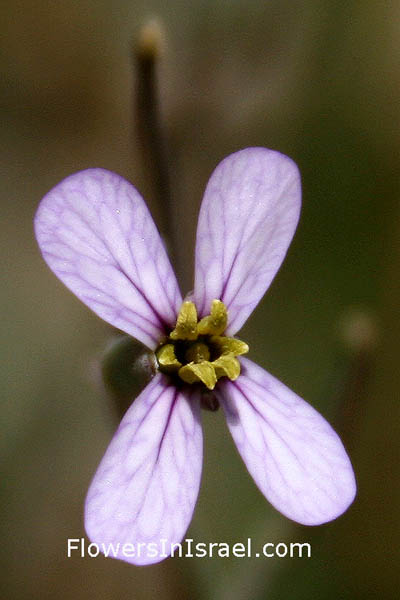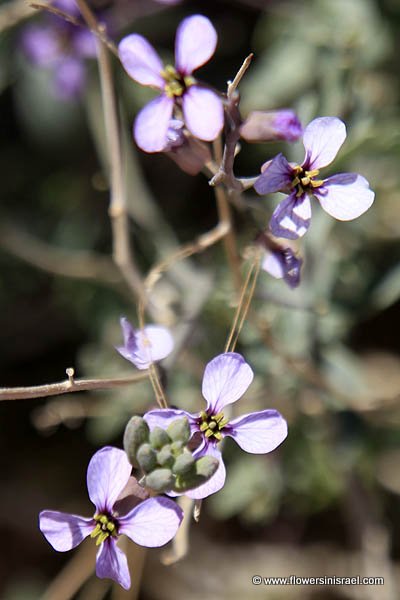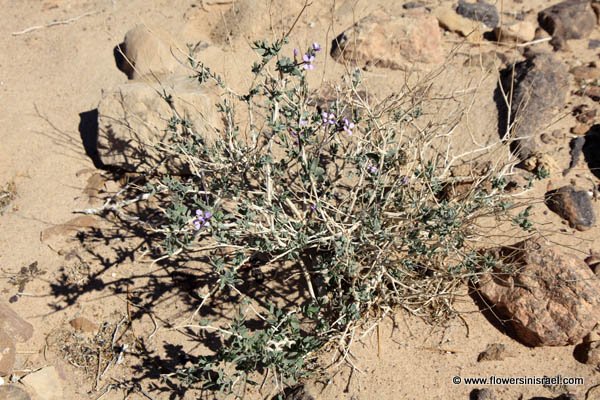Hebrew: סילון קוצני, Arabic: سلة , شبرم
| Scientific name: | Zilla spinosa (L.) Prantl | |
| Common name: | Spiny Zilla | |
| Hebrew name: | סילון קוצני | |
| Arabic name: | سلة , شبرم | |
| Plant Family: | Cruciferae (Brassicaceae), מצליבים |

|
| Life form: | Chaemaephyte, perennial, suffruticose to shrubby, spinescent woody undershrub | |
| Spinescence: | Stems | |
| Stems: | Up to 80-170 cm height, 100-150cm width; it may also be a small woody plant not exceeding 20-30 cm | |
| Leaves: | Alternate, entire | |
| Flowers: | Pink, violet petals | |
| Fruits / pods: | chickpea-like | |
| Flowering Period: | March, April, May, June | |
| Habitat: | Wadis in hot desert areas, Thermophilous plants | |
| Distribution: | The Mediterranean Woodlands and Shrublands, Semi-steppe shrublands, Shrub-steppes, Deserts and extreme deserts | |
| Phytogeo: | Saharo-Sindian | |
| Summer shedding: | Perennatring |

Location: Makhtesh Ramon (Ramon Crater), Ha-Minsara (The Carpentry Shop) Derivation of the botanical name: Zilla, from "silla", an arabic word denoting a spine, named by Peter Forsskål ((1732-1763), author abbreviation Forssk.); silon is ‘thorn’. spinosus, spinos, "thorny", refers to its spiny nature. The Hebrew name: סילון, silon, from Arabic silla; סילון, silon "thorn, briers."
Zilla spinosa are usually in parts of wadi beds that are covered with alluvial deposits. It is a short leaved herbaceous naked, bluish-waxy perennial or an annual with a roundish canopy. Their flowers are light violet. Fruits are chickpea-like. When the plant is mature it is pulled out of its bed and goes bouncing through the desert. Zilla spinosa is a commonly used plant in Bedouin Households of St Katherine’s Protectorate; 60% of the dry boiled plants are used for Urinary tract diseases and 6% is collected for fuel. Bible resources:

Location: Makhtesh Ramon (Ramon Crater), Ha-Minsara (The Carpentry Shop) |